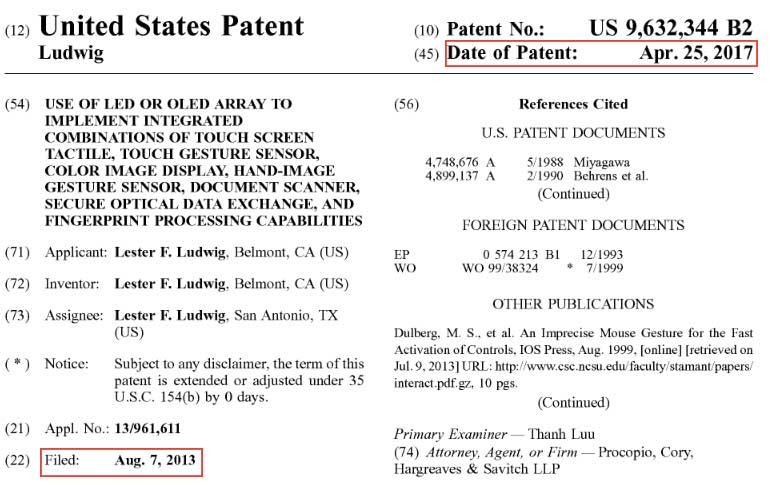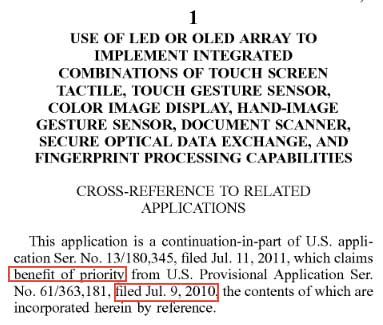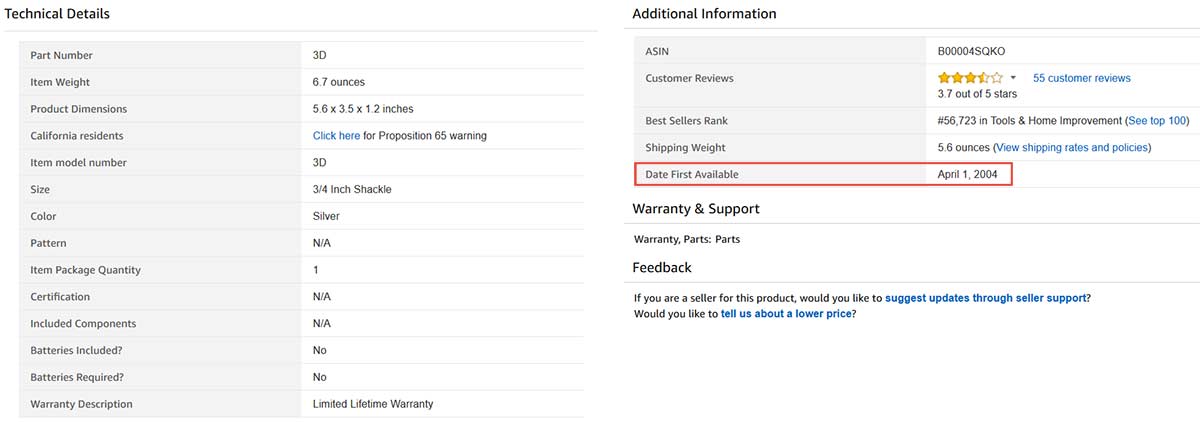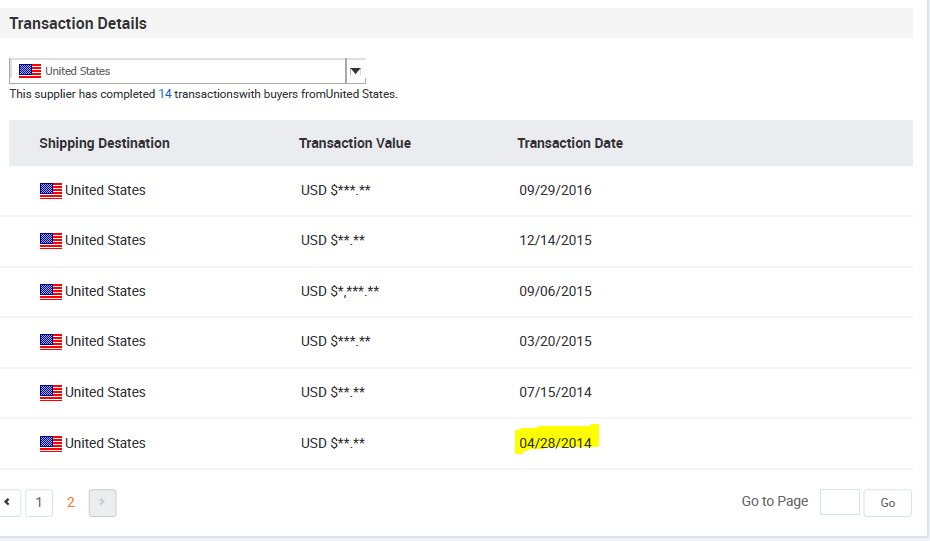There’s an issue that crops up surprisingly issue in an age where hundreds of thousands of small retailers sell goods online. Consider the following: Someone has been selling a product for some time through an Amazon-based store. One day, they’re hit with a patent infringement lawsuit, claiming that the product they sell infringes on a patent.
How can the seller mount a defense?
In many cases, the seller was selling the product in question before the patent went into effect, and thus, can’t be found to have infringed on the patent. This can happen because the patent holder simply wasn’t aware of this prior art (in the form of a product already being sold) and the Patent Office examiner missed it. In other cases, the patent’s owner is maliciously trying to lock down an existing market, and again, the Patent Office granted the patent without proper examination. Either way, the Supreme Court’s ruling in Peters v. Active Manufacturing Company way back in 1889 makes it clear that a patent can’t be infringed upon by a preexisting product or patent.
Here’s how you determine whether this defense is applicable (but be sure to contact a patent attorney for assistance, as this isn’t a DIY-type legal process).
Determine the priority date of the patent you are alleged to have infringed.
Every patent has three key dates. The first two are the filing date, the date on which the patent application was first filed, and the issue date, the date on which the patent was issued. Both dates are shown at the top of the first page of a patent.

In the example above, the issue date is April 25, 2017, as shown to the top-right. The filing date is August 7, 2013, as shown at the bottom left.
However, the there is a third date that is critically important, the priority date. This date, which may be established with the filing of a provisional patent application, ultimately determines when a patent will begin to confer legal protections.
Unfortunately, the priority date can be difficult to find. It may be listed on the front page of the patent, may be buried in the text of the patent, or may be mentioned in the original application data sheet in the USPTO’s records. In the case of the example, the priority date is shown on page 27 of the patent.

If you can find the patent in question on Google Patents, the priority date will typically be prominently shown to the right, as in this case. However, given that this date is provided by Google and not the actual patent, don’t take it as the absolute truth.
If you are not comfortable with researching patent records, it’s wise to ask a patent attorney to assist you. In about 50% of cases, a patent applicant will not assert any priority claim, making the priority date the same as the filing date. In the case above, if a priority date of July 9, 2010 had not been asserted, the priority date would have been August 7, 2013.
Calculate the critical date of the patent.
Once you have the priority date of the patent, you can determine the critical date. The critical date establishes an absolute point in time where, if all elements of a patent claim are shown to exist prior to that date, then the invention in question is not patentable.
For patent applications that have an earliest priority date before March 16, 2013, the critical date is one year before the priority date. Thus, in the case of our example, because the priority date (July 9, 2010) precedes this date, its critical date is July 9, 2009.
If the priority date falls after March 16, 2013, then the critical date is equivalent to the priority date.
In a case where an inventor sells a product without a patent, they have one year to file a patent application before their invention is rendered unpatentable by the inventor’s own sale. In cases where the date of first sale precedes the patent application, the critical date is one year before the priority date, regardless of when the priority date was established.
Determine the date on which the prior art device—your allegedly infringing product—was first sold on Amazon, Alibaba, etc.
If you have maintained your sales records, you will have a paper trail showing when you first sold a product. However, it’s helpful to have third-party verification where it’s not just your word versus the patent owner’s. If you sold your product via a third-party vendor—Amazon, Etsy, eBay, Alibaba—then a copy of the sales record from that company will help.
Amazon is particularly helpful in that if you or another party has sold the allegedly infringing product, then you can refer to the public listing for that product to find the date on which it was first listed on Amazon.

If you scroll down towards the bottom of a product listing, you will find a ‘Technical Details’ and ‘Additional Information’ section. In the latter you can find an item labeled ‘Date First Available,’ as shown in the above example.
Alibaba provides similar information, but you need to sign in with an account to see it:

The date of first sale for this item is April 28, 2014. If there are multiple pages of transactions, you will want to the last page to find the earliest transaction. In this case, the first sale is found on page 2.
Lastly, if you have asked another company to manufacture the product for you, then the manufacturer should have a ‘certified manufacturer’s certificate’. This will list the first date on which a lot of the devices were sold to you or anyone else for that product. Sometimes this includes a screen capture of either the Amazon or Alibaba first sale date.
Identify what, if anything, is different between the alleged prior art device and the alleged infringing device.
In many cases, these two devices are one and the same. For instance, if a patent owner has accused you of selling an infringing product, the item you’re selling and the prior art in question are the same thing.
But in some cases, there may be minor differences, and some analysis is required to determine whether all of the elements in the patent claim are present in both devices.
Determine what claimed features in the patented device distinguish it from the prior art device.
At this point, if you have shown that your prior art device was sold before the critical date of patent which is being enforced against you, the only question is whether there’s anything that distinguished your device from the patent owner’s. If there is no difference, then this step is trivial, and the patent is not enforceable. If there are differences, then there is a final inquiry.
Determine if there is at least one claimed feature that is unique to the patented invention which is also found in the alleged infringing device.
If, in the previous step, significant differences have been found between the two devices, a further examination is necessary. If there is one claimed feature unique to the patented invention which is also found in the infringing device, then the defense used in Peters vs. Active Manufacturing isn’t applicable.
This is where a patent attorney can determine if any other infringement defenses are applicable, which requires rigorous analysis.
If you need assistance in defending against an accusation of patent infringement, or you are trying to determine if a product being sold is infringing on your patent, the Law Office of Michael O’Brien can help. To learn more, contact us by calling (916) 760-8265, or send us a message using our contact form.
